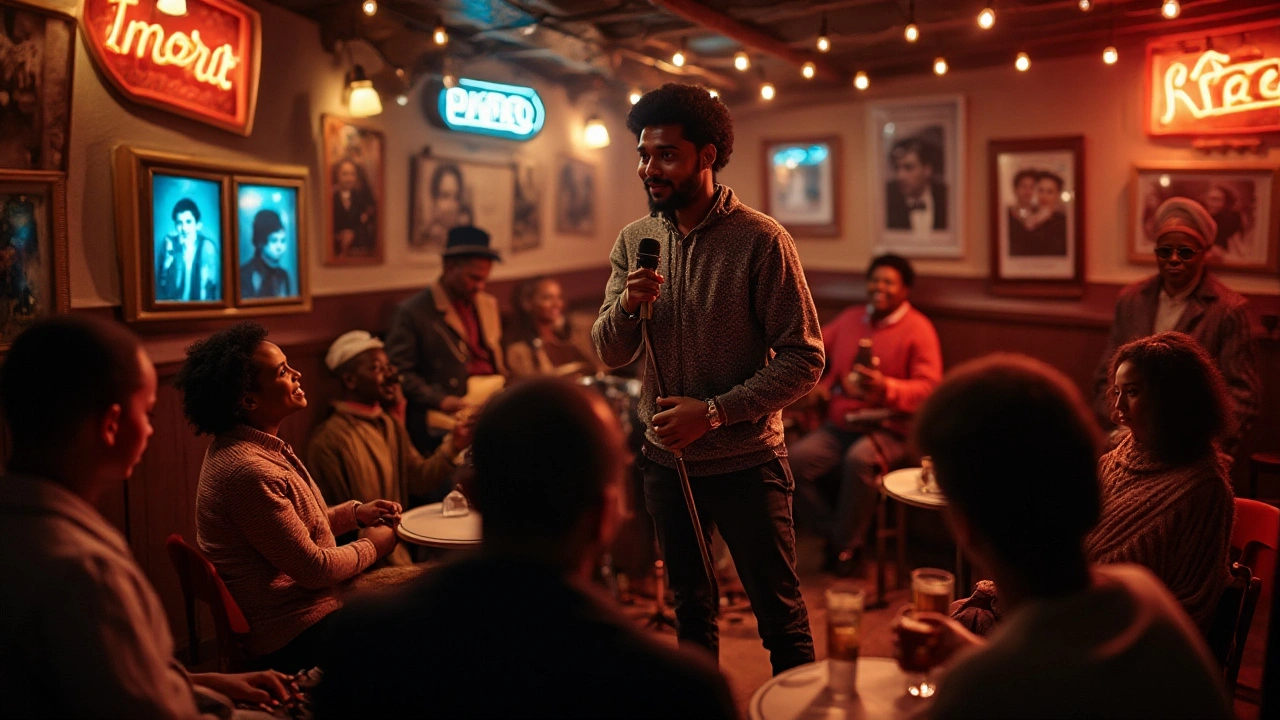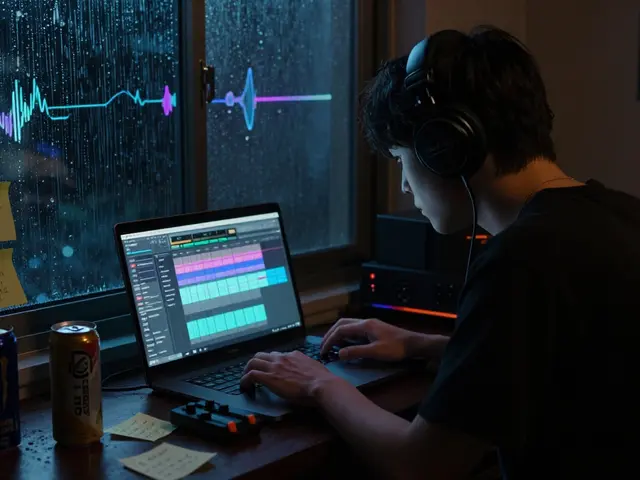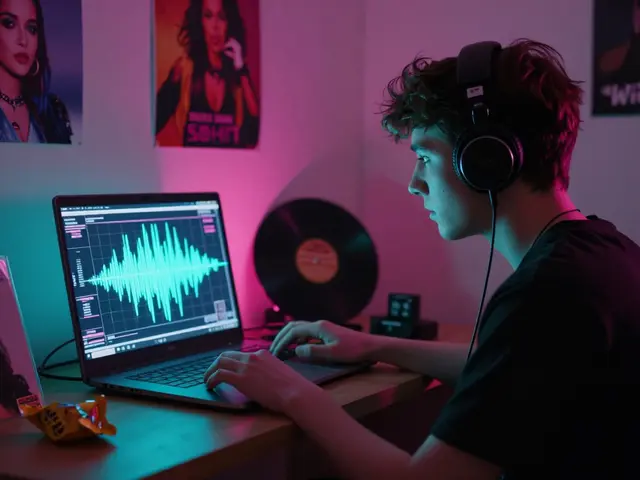Rhythm and Blues, often abbreviated as R&B, is more than just a genre; it’s a cornerstone of the music world. Understanding its roots and evolution helps us appreciate not only its unique sound but also its impactful role in shaping modern music.
R&B emerged in the 1940s as a distinctive sound combining jazz, gospel, and blues. Originally, it was a reflection of the African American experience, offering a voice during times of social upheaval and segregation. Early R&B artists laid the groundwork for the iconic music we enjoy today.
Moving through the decades, R&B evolved, influencing and being influenced by other genres such as rock and roll, soul, funk, and hip-hop. Legendary figures like Ray Charles, Aretha Franklin, and Marvin Gaye played pivotal roles in this transformation. Their contributions went beyond music; they helped to break racial barriers and champion civil rights through their art.
Today, R&B continues to adapt and thrive, merging with contemporary styles and reaching new audiences worldwide. From the smooth ballads of the past to the dynamic, genre-blending tracks of today, R&B remains an essential and vibrant force in the music industry.
- Origins and Early Development
- Key Influences and Artists
- Cultural Impact and Social Change
- Transformation Over the Decades
- R&B in Contemporary Music
Origins and Early Development
Rhythm and Blues, known universally as R&B, made its debut in the 1940s. Born out of the African American communities in urban areas, it combined the rhythmic elements and emotional depth of blues with the vibrant energy of jazz. This hybrid sound quickly became the backdrop to many people's daily lives, encapsulating both joy and sorrow in equal measure.
In its infancy, R&B was more than music; it was a reflection of the struggles, dreams, and realities of African Americans. The genre emerged during a time of significant social upheaval. The Great Migration saw millions of African Americans moving from the rural South to urban centers in the North, seeking better economic opportunities and escaping the harsh segregation laws of the Jim Crow era. This shift not only altered the demographic landscape but also fostered a rich cultural exchange that influenced the development of R&B.
Early R&B music was characterized by its strong backbeat, harmonious vocals, and the use of electric instruments. Artists like Louis Jordan, whose hit songs like 'Caldonia' topped the charts, were pioneers of this new sound. His style incorporated jump blues elements, blending a high-energy performance with humorous, light-hearted lyrics. Another significant figure was Ruth Brown, often called the "Queen of R&B," who brought a powerful voice and emotive delivery that deeply resonated with audiences.
The term "Rhythm and Blues" itself was coined by Billboard magazine in 1949 to replace the term "race music," reflecting a broader recognition and marketing of this genre. It marked a significant step towards breaking down racial barriers in the music industry. One cannot discuss the origins of R&B without mentioning the role of radio stations like WDIA in Memphis. As the first station in the U.S. to cater specifically to a Black audience, WDIA played an instrumental role in popularizing R&B music. By the early 1950s, artists like Ray Charles and Fats Domino began to incorporate R&B elements into their music, laying the groundwork for the future explosion of rock and roll.
"R&B is the essential feel-good music that provided a backdrop for the civil rights movement," music historian Gerald Early once noted. The genre's ability to convey profound emotion and social messages while remaining entertaining and relatable can be traced back to its early roots.
The late 1940s and early 1950s were a transformative period for R&B, as the genre began to evolve rapidly. Independent record labels such as Atlantic Records and Chess Records emerged, eager to promote R&B artists who were often overlooked by major labels. These labels were crucial in giving a platform to artists like Big Joe Turner, whose hit song 'Shake, Rattle and Roll' became a classic of the genre. The cross-pollination of R&B with other genres during this period cannot be overstated. Gospel music, in particular, had a significant influence. Many R&B artists, including Sam Cooke and Sister Rosetta Tharpe, started their careers in gospel before transitioning to secular music.
As the genre grew in popularity, it paved the way for other music styles. The elements of R&B—its rhythms, melodies, and heartfelt lyrics—became integral to the development of rock and roll, soul, and later, hip-hop. Today, reflecting on its origins provides a deeper appreciation for R&B's essential role in the musical tapestry of the 20th century and beyond.
Key Influences and Artists
When discussing the major influences and artists in the realm of Rhythm and Blues, one must start with the pioneers who laid the initial groundwork. The rise of R&B can be traced back to the 1940s when artists like Louis Jordan started blending jazz and blues to create a new, exciting sound. Jordan, often referred to as
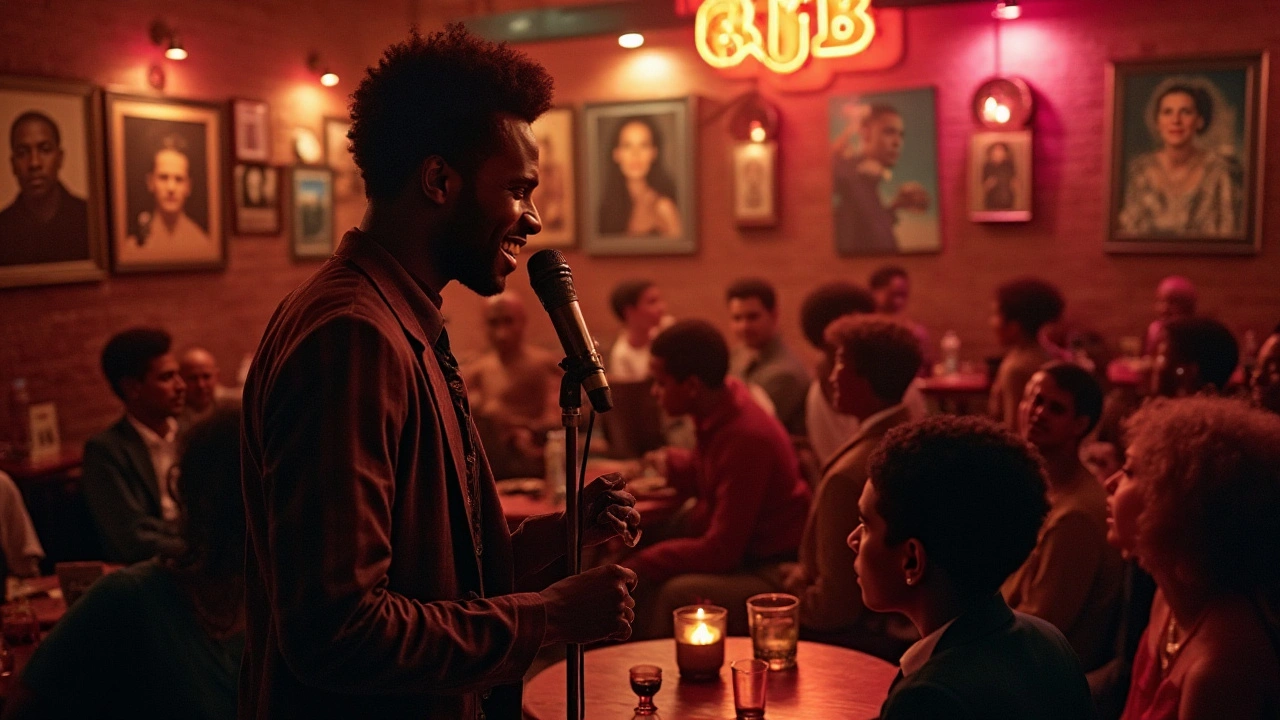
Cultural Impact and Social Change
Rhythm and Blues, or R&B, has long been more than just a form of entertainment; it's been a catalyst for social change and cultural evolution. During the mid-20th century, R&B became the soundtrack for the civil rights movement. As African Americans fought for equality and justice, artists like Sam Cooke and Nina Simone provided anthems that voiced their struggles and aspirations. These songs were not just about love and life but resonated deeply with the ongoing fight against racial segregation and oppression.
Sam Cooke’s “A Change is Gonna Come” is a prime example of an R&B song that transcended music to become an anthem for change. Released in 1964, it captured the deep longing for social justice and became a rallying cry. Similarly, Nina Simone’s “Mississippi Goddam” was a bold statement against the racial violence prevalent in the South. This blend of music and activism helped to unite and inspire communities, using the universal language of music to bridge divides.
An essential aspect of R&B's cultural impact is its ability to break down racial barriers. During a time when the US was sharply segregated, R&B artists gained popularity across racial lines. Shows and radio stations that featured R&B music provided rare spaces where Black and white audiences could enjoy the same music, pushing cultural boundaries and fostering greater understanding. This cross-racial appeal helped pave the way for greater acceptance and appreciation of Black culture in mainstream society.
“Music can change the world because it can change people.” - Bono
Moreover, R&B's influence extended into fashion, language, and attitudes, reflecting and shaping the zeitgeist. The stylish looks of Motown artists, for instance, set trends that many aspired to emulate. The slang and catchphrases popularized by R&B songs often found their way into everyday conversation, making the genre a significant cultural force.
Even as R&B evolved into modern iterations like neo-soul and contemporary R&B, its roots in social advocacy have remained. Artists today, such as Beyoncé and John Legend, continue to use their platforms and music to address issues like racial injustice, police brutality, and gender inequality. This sustained commitment to social commentary highlights R&B's enduring role in promoting cultural awareness and change.
Additionally, the influence of R&B on other music genres cannot be overstated. Its rhythms and themes have seeped into rock, pop, and hip-hop, creating a rich tapestry of interconnected musical styles. The legacy of R&B’s cultural impact is a testament to its power not just as music but as a continuous, evolving voice pushing for progress.
Transformation Over the Decades
The journey of Rhythm and Blues, often known as R&B, through the decades is nothing short of remarkable. From its early beginnings in the 1940s, R&B has continuously evolved, embracing new influences and shaping the sound of music globally. This section explores the ways in which R&B has transformed over various decades, highlighting key moments and artists who left their mark on the genre.
In the 1950s, the rising popularity of R&B began to reshape the music landscape, planting the seeds for what would later become rock and roll. Artists like Ray Charles pioneered the genre, blending gospel's emotional depth with blues' stylistic nuances. These early influences paved the way for a new, thrilling sound that captivated audiences across the country. It was a time where rhythm and communication merged to create songs that resonated with listeners on a deeply personal level.
The 1960s brought about a wave of social change, and R&B was at the heart of it. Aretha Franklin's empowering anthems and Marvin Gaye's reflective lyrics provided soundtracks to the Civil Rights Movement. R&B songs not only entertained but also inspired and motivated people to seek justice and equality. These artists used their platform to address vital issues, creating music that was both poignant and socially significant.
As we moved into the 1970s and 1980s, R&B continued to thrive and diversify. The soundscape of R&B expanded with the introduction of funk and disco elements. This era saw the rise of artists like Stevie Wonder and Michael Jackson, who pushed the boundaries of the genre and brought international fame to R&B. Their innovative mix of strong rhythms, melodic hooks, and socially conscious lyrics helped to define the music of a generation.
In the 1990s, R&B saw another transformation with the emergence of New Jack Swing, a style that combined hip-hop beats with traditional R&B melodies. Pioneers like Teddy Riley and Janet Jackson were at the forefront of this movement, creating a fresh and exciting sound that dominated the charts. This period also marked the rise of influential R&B girl groups like TLC and Destiny's Child, who brought a new, empowering voice to the genre.
R&B in the 21st Century
Entering the 21st century, R&B has continued to evolve and merge with other genres. Contemporary artists like Beyoncé and Usher blend R&B with pop, hip-hop, and electronic music, creating versatile and globally appealing sounds. The digital age has also democratized the genre, allowing independent artists to share their music with the world and keep the R&B spirit alive.
Today, Rhythm and Blues remains a vibrant and influential force in the music industry. It has shown an incredible ability to adapt and survive through the ever-changing musical landscape. Whether it's through soulful ballads or upbeat dance numbers, R&B continues to connect with listeners worldwide, proving that its timeless appeal is here to stay.
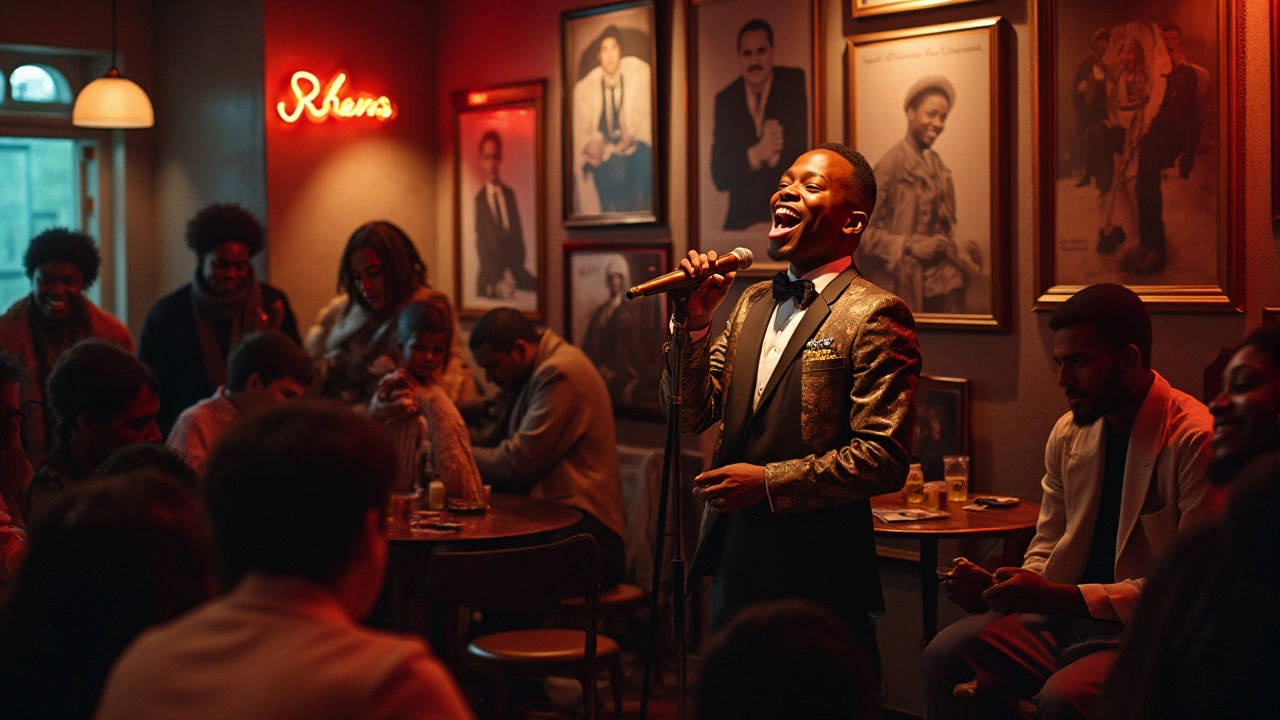
R&B in Contemporary Music
Today, Rhythm and Blues stands as a vital and dynamic genre, continuously evolving to reflect the intricate tapestry of modern music. One notable aspect of contemporary R&B is its fusion with other genres, creating a soundscape that is both rich and diverse. Artists today often blend R&B with pop, hip-hop, and electronic music, crafting hits that resonate across different audiences.
Many contemporary R&B artists such as Beyoncé, The Weeknd, and Frank Ocean have pushed the boundaries of the genre while ensuring its core essence remains intact. For example, Beyoncé's critically acclaimed album 'Lemonade' incorporates elements of rock, country, and even spoken word, all while staying true to its R&B roots. This blending of styles has not only broadened the appeal of R&B but also paved the way for innovation and creativity within the genre.
Another key trend in modern R&B is its emphasis on introspective and personal lyrics. Artists are increasingly using their platforms to address deep and often challenging themes such as mental health, personal struggle, and societal issues. The Weeknd's 'After Hours' delves into heartbreak and addiction while H.E.R.'s music often explores themes of self-identity and empowerment. This shift towards more meaningful lyrics has deepened the connection between artists and their audiences, making the music more relatable and impactful.
The advent of digital technology has also played a significant role in shaping contemporary R&B. Streaming platforms like Spotify and Apple Music have made it easier for new and emerging artists to reach global audiences. This accessibility has led to a more diverse range of voices and styles within the genre. Additionally, social media has provided artists with the tools to engage directly with their fans, fostering a sense of community and loyalty that was previously hard to achieve.
Live performances remain a cornerstone of R&B's appeal. The energy and emotion conveyed in live shows create unforgettable experiences for fans. Artists like Usher and Alicia Keys are renowned for their electrifying performances that seamlessly blend powerful vocals with intricate choreography. These live shows not only showcase the talent of the artists but also highlight the enduring power of R&B music to move and inspire.
A quote from music critic and historian Nelson George encapsulates the essence of contemporary R&B perfectly:
"R&B continues to be the heartbeat of modern music, adapting to changing times while preserving its soul. It’s a genre that evolves but never loses its essence."
Looking at the charts, it’s clear that R&B’s influence is as strong as ever. Albums like SZA’s 'Ctrl' and Khalid's 'American Teen' have not only topped charts but also garnered critical acclaim, demonstrating the genre’s widespread appeal. The future of R&B looks promising, with a new generation of artists ready to carry the torch and introduce the genre to even wider audiences.
In summary, the vibrant and ever-evolving nature of contemporary R&B ensures it remains a vital force in the music industry. Its ability to adapt and integrate with modern sounds while continuing to touch hearts worldwide underscores its importance. As long as there are stories to tell and emotions to express, R&B will remain an essential part of our musical landscape.

